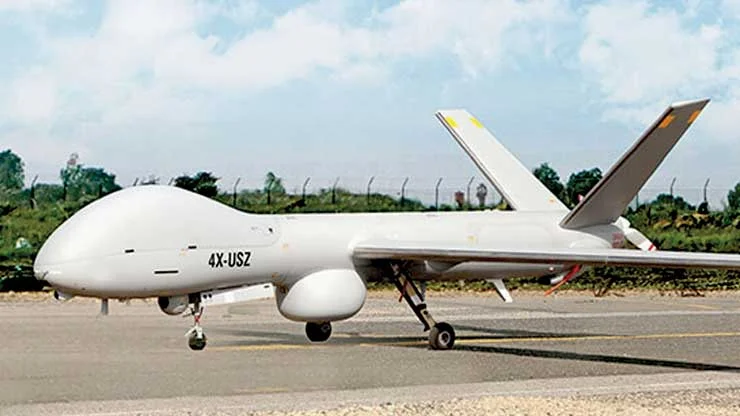Preparing for Conflict: The New Rules: The global landscape has fractured under the weight of relentless conflict. Russia’s invasion of Ukraine in 2022 shattered European stability, triggering a humanitarian crisis and geopolitical upheaval. In the Middle East, renewed violence in Gaza and escalating tensions in Lebanon and Syria have deepened regional divides. Sudan’s civil war, erupting in 2023, has displaced millions, while coups and insurgencies across West Africa have destabilised fragile democracies. The Pahalgam attacks, Operation Sindoor, and ongoing upheavals in Bangladesh have brought South Asia into a state of agitation. Even in cyberspace, nations wage silent wars. The world, once striving for unity, now splinters under the strain of nationalism, resource battles, and ideological extremism—a tapestry unravelling thread by thread.
In the new world order, bracing for conflict is inevitable. But what should nations do? The rules of warfare are changing. Asymmetric warfare, where low-cost, mass-manufactured devices such as drones and loitering munitions wreak havoc deep behind enemy lines, is becoming increasingly common. Combating such weapons is costly and depletes a nation’s arsenal quickly.
Operation Spider Web, Ukraine’s audacious drone strike deep inside Russian territory, showcased how low-cost FPV drones can cripple strategic air assets across five time zones. India’s Operation Sindoor demonstrated precision strikes using indigenous tech against insurgent hideouts, redefining tactical reach.
Meanwhile, Israel’s surgical air raids on Iranian nuclear and military targets bypassed conventional defences, leveraging real-time intelligence and stealth. These operations underscore a paradigm shift: wars are no longer won by size, but by agility, innovation, and surprise. Asymmetric warfare is not just emerging—it’s dominating.
Winning Tomorrow’s War: The Technology Imperative
Winning the war for tomorrow hinges on mastering both civilian and military technology and fusing them in novel ways to gain both scale and surprise. In modern battlefields, electronic warfare (EW) systems disrupt enemy communications and radar, blinding adversaries while shielding friendly forces. Offensive capabilities like loitering munitions offer precision and persistence, reshaping tactical engagements. Meanwhile, defensive counter-drone technologies, such as directed-energy weapons and jamming systems, neutralise threats before they reach critical assets.
The synergy of these technologies—EW for disruption, drones for reach, loitering munitions for lethality, and countermeasures for protection—defines the future of warfare, where dominance is dictated by digital superiority and rapid adaptation.
India’s Vision: “Aatmanirbhar” in Defence
Prime Minister Narendra Modi launched the Aatmanirbhar Bharat initiative in 2020 to promote greater economic self-sufficiency and national development. Defence was earmarked as a core sector under this initiative, both as a strategic move and as a means of boosting the local economy.
Subsequently, India has seen a concerted push to transform its local defence and aerospace sectors. Once reliant on imports and foreign technology, the country is now rapidly evolving into a self-reliant powerhouse, driven by indigenous innovation, strategic investments, and robust public-private partnerships. At the heart of this transformation is a new vision—one that positions India not just as a consumer of defence technology, but as a creator and exporter of cutting-edge solutions.
Building Blocks for Realising the Vision
Strategic Vision and Policy Backbone: Policies like Aatmanirbhar Bharat, Make in India, and the Defence Acquisition Procedure (DAP) prioritise domestic manufacturing, encourage private sector participation, and streamline procurement processes. The result: a dramatic rise in indigenous production, which reached ₹1.27 lakh crore in FY 2023–24, and a surge in defence exports to ₹23,622 crore in FY 2024–25.
The establishment of Defence Industrial Corridors in Uttar Pradesh and Tamil Nadu has further catalysed investment, attracting over ₹8,658 crore in commitments. For example, Adani Defence’s ₹1,500+ crore investment in the Defence Industrial Corridor in Kanpur is creating South Asia’s largest integrated Ammunition Complex, in a sector earlier considered ’off-limits to private players’.
The strategic policy transformation is happening across both military and civilian domains. The Drone Rules 2021 changed the playing field for civilian drone use, allowing free innovation and experimentation. Sectors like agriculture and surveillance started adopting drones in the hundreds. The newly launched rules resulted in a wave of startups setting up indigenous capabilities to tap into emerging opportunities. Investments followed quickly, for example, Adani Defence’s investment in General Aeronautics, an IISc-incubated startup focusing on agriculture drones.
Public-Private Partnerships: A New Defence Paradigm: India’s defence innovation is increasingly driven by public-private partnerships (PPPs). These leverage the R&D capabilities of public institutions like DRDO and ISRO with the agility and manufacturing prowess of private firms like Adani Defence, Tata Advanced Systems, Bharat Forge, and L&T Defence.
The Transfer of Technology (ToT) framework has enabled companies to commercialise defence technologies, accelerating deployment and operational readiness. This model ensures that innovation is not confined to labs but reaches the battlefield. Adani Defence & Aerospace, for example, is the DCPP partner for nine critical programs with DRDO, spanning areas such as missiles and AEWACS.
Global Collaborations and Strategic Expansion: India’s defence sector is also expanding its global footprint. Adani Defence has executed multiple ToT arrangements with companies from Israel (e.g., Elbit Systems, IAI, Sparton), Russia, and the Middle East (e.g., EDGE Group), leveraging international expertise to enhance indigenous capabilities. India now exports defence equipment to over 100 countries, including the USA, France, and Armenia. The government aims to achieve ₹50,000 crore in defence exports by 2029, reinforcing India’s role as a dependable partner in global security.
Creating an Indigenous Tech Ecosystem, Anchored by Private Players: Modern warfare is increasingly shaped by emerging technologies. India is investing heavily in AI-powered surveillance and decision-making systems (e.g., BSS/Sanjay, made by BEL), autonomous drones for reconnaissance and combat (e.g., Drishti 10 drones, made by Adani Defence), and cyber defence platforms (e.g., Sambhav Smartphones).

The private sector is actively investing in creating national capabilities. A key player in India’s defence renaissance is Adani Defence & Aerospace, which exemplifies the country’s shift toward indigenous, high-tech defence solutions. With a vision that closely aligns the future of warfare with India’s security interests, the company’s capabilities span across:
- Missile systems (short, long-range, and UAS-guided)
- Small arms (pistols, assault rifles, LMGs, snipers)
- Unmanned Systems (UAVs, UUVs)
- Loitering Munitions (tactical, strategic)
- Counter-drone technologies (vehicle-mounted, portable, handheld)
- Aircraft maintenance, repair, and overhaul
- AI/ML solutions (for ISR & autonomous security)
- AEW&CS (e.g., DCPP for Netra MkII)
Similarly, to secure air superiority, India is actively pushing the development of indigenous aircraft platforms, including the Tejas LCA (HAL), AMCA, and indigenising C295 aircraft (Tata). The private sector is expected to play an anchor role in such initiatives and serve not only domestic but multiple export markets.
From Vision to Execution
India’s defence budget was ₹2.53 lakh crore in 2013–14 and ₹6.81 lakh crore in 2025–26. In FY 2024–25 alone, the MoD signed 193 contracts worth ₹2.09 lakh crore, with 177 contracts (₹1.69 lakh crore) awarded to the domestic industry. These contracts fuel innovation, job creation, and technological advancement.
The increase in spending, with a higher contribution by the domestic defence sector, is helping India transition into an innovation and technology powerhouse in defence. Apart from the Centre, states are also wooing investors actively. For example, Telangana signed ₹1,000 crore worth of MoUs with Adani Defence in 2024 to set up a comprehensive defence ecosystem in Telangana covering drones, counter-drones, etc.
Domestic Innovation in Action: Operation Sindoor
Operation Sindoor was a landmark demonstration of India’s domestic defence innovation, executed in response to the Pahalgam terror attack. Without crossing international borders, Indian forces neutralised nine terror camps using a mix of indigenous and global technology and subsequently defended India’s sovereignty successfully using multiple indigenous technologies, including the Akash missile, Pinaka rocket launchers, SWATHI radar, integrated through an AI-powered backbone located in strategic bases.
Some of the key technologies used during Operation Sindoor were indigenous versions of globally proven platforms. Adani Defence & Aerospace’s Skystriker platform was made in one of its facilities in Bengaluru, with ToT from Elbit Systems, Israel. Similarly, the Harop drones used during the operation have also been indigenised through a partnership between Adani Defence and IAI of Israel.
This precision strike showcased the maturity of India’s Aatmanirbhar Bharat initiative in defence, blending real-time intelligence, electronic warfare, and net-centric operations. The operation proved that India’s military is not only tactically capable but also technologically self-reliant, setting a new benchmark for indigenous warfare capabilities and reaffirming the nation’s commitment to strategic autonomy.
The Way Forward: From Innovator to Superpower
India’s emergence as an innovation hub in defence is still nascent. There is a long way to go before crucial ecosystems are fully set up. Many technologies continue to come from our traditional defence partners like France, Russia, and Israel. However, the journey towards Aatmanirbhar innovation is well underway.
Going forward, a key question needs to be addressed: What needs to be done to go from being an emerging innovation hub to a global defence superpower?
Involving a larger base of private players, startups, and research agencies will underpin our growth. Supply chains need to be strengthened locally, and a concerted effort to strengthen the defence corridors with on-ground investments is critical. Innovation-linked incentives for local players should be expanded. Providing a safety net for defence tech innovation through assured offtake programs like the Make II needs to be scaled up and accelerated. Establishing strong defence G2G channels with our allies to expand sales of private and public defence tech to our partner nations will become crucial.
None of the above initiatives are new. However, the difference between being an ’aspiring defence innovator’ and a defence superpower lies in execution. The seeds have been sown through various initiatives. Early signs of progress are visible. A focused effort to accelerate execution will ensure that the fruits of our country’s labour are realised.
-The writer is Chief Digital Officer - Adani Defence & Aerospace






